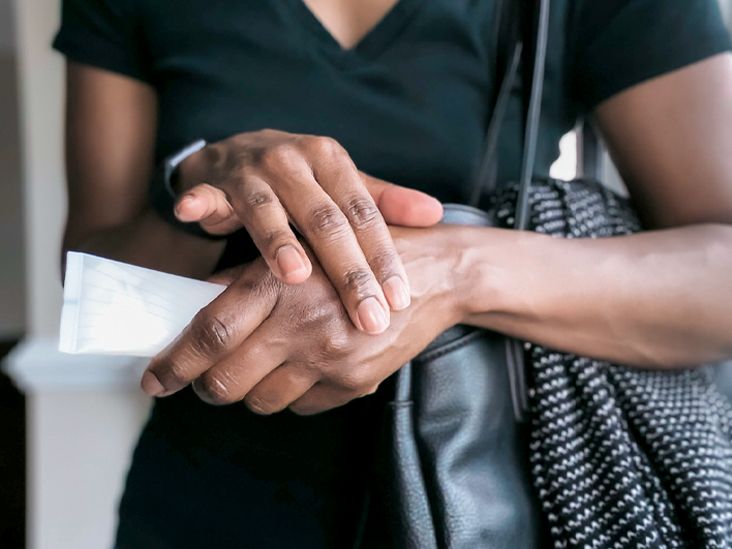Choosing an artist for their knowledge and experience working with dark skin can help you get the desired look and avoid common mistakes.

When I got my first tattoo, I was nervous and excited. Finally, I was earning my badge of honor in adulthood.
At the same time, I didn’t see anyone in the tattoo photos plastered on the walls who had brown skin like mine: skin the color of milk chocolate with tints of bronze and golds.
As much as I wanted to go big with bold and vibrant colors to adorn my body, I felt limited. I felt I could never fully display my body art the way I had always dreamed.
Fortunately, I was wrong.
Tattoo artists have done a lot to address tattoo myths for people with medium to dark skin. Their work serves as testament to what’s possible.
Here’s what two tattoo artists with nearly 60 years of professional experience have to say about getting the best tattoo for dark skin or skin of color.

Setting yourself up for success before getting your tattoo is crucial.
Above all else, make sure you work with a tattoo artist who has extensive experience tattooing a range of dark skin tones.
James Spooner of Monocle Tattoo in Los Angeles has been tattooing for over 13 years. He suggests looking at portfolios, especially on social media.
“If they don’t have any dark skin in their portfolio, they’re either not proud of their work, they haven’t done it, or they don’t want to do it,” Spooner said. “There’s no excuse with the internet, [because] as soon as you do a piece that you’re excited about, you post it online.”
Jacci Gresham of Aart Accent Tattoos in New Orleans has been tattooing for over 40 years. He knows firsthand some common mistakes people make when choosing a tattoo for dark skin.
“Especially with really dark skin, you’re looking for someone with experience more than anything,” Gresham said. “You gotta adjust every tattoo to the individual person. When your skin is really dark, the artist needs to have the knowledge. This profession takes time.”
“If you judge the quality of your tattoo by what’s possible on white people, then you’re always gonna fall short.”
— James Spooner
Dark skin is rich in melanin, whether it runs light, deep, or in between.
It’s important to understand how color will translate to your skin’s tones and undertones over time.
“People think because they get this tattoo and it’s on white paper that it’s gonna come out as well on darker skin,” Gresham said. “But it doesn’t because … it’s like having a tattoo under a tinted window.”
Gresham also points out that different parts of the body have different tones. This means tattoo artists need to know how to adapt to varying shades depending on what body part they’re working on.
Another consideration is the possibility of developing a keloid (raised scar tissue that forms after a skin injury) from a tattoo. Dark skin is more likely to develop keloids than light skin. If you’ve developed keloids before, there’s a chance tattooing can cause them again.
Test it out
To better understand how tattoo ink is absorbed by dark skin over time, Gresham offers a simple paper test.
You can use a marker on a brown sheet of paper to see how the paper will absorb the color. Try to find a paper option that most closely matches your skin tone.
Tattoos fade over time. Aging and sun exposure can also erode the tattoo’s color.
Because of this, artists strongly encourage people to look for photos of tattoos on healed dark skin tones versus photos taken moments after the tattoo is completed.
Follow artists who highlight tattoos on dark skin, like Black Artistry 101. You won’t only find beautiful tattoos but also tattoo artists of all backgrounds whose quality work is artfully immaculate.
Given the nuances of dark skin tones and undertones, experts suggest erring on the side of simplicity with your tattoo’s size and details.
“There has to be space between the lines,” Spooner said. “The thing that works about tattoos is contrast. Otherwise, from a distance, it just looks like a blob.”
Contrast can be color or line weight and texture.
Tiny writing or too much detail without enough spacing can often work against medium to dark skin. The darker your skin, the less likely tiny details will show.
Colors that complement dark skin tend to be warmer. Consider shades of:
- red
- orange
- yellow
- magenta
- bright green
Some ink colors can cause an allergic reaction. Red ink is associated with the most reactions, but yellow, green, and purple can also cause issues.
The right combination of colors should be customized to your skin tone and undertones. For example, green can work if someone already has yellow or golden undertones. Ask your tattoo artist to help you figure out what’s best for you.
In terms of colors to avoid, people who have medium to deep skin tones should stay away from colors that are already significantly darker than their skin. Simply put, it just won’t show up well over time.
“You know, purple is everybody’s favorite color. But your traditional purple is gonna be difficult because purple is dark and your skin is dark,” Gresham said. “A royal blue? Not your best color, even if you add white to it.”
Blues and purples can look especially muddy on dark skin.
Once your tattoo is complete, most artists will instruct you on how to take the best care of it.
For tattoos on medium to deep skin, experts recommend these three simple steps:
- Keep it clean.
- Keep it moisturized, but don’t overdo it.
- Keep it out of the sun, and use plenty of sunscreen.
Contrary to what some melanin-rich people believe, having a lot of melanin doesn’t mean your skin is immune to the sun’s aging effects.
“If you want your tattoo to not get blurry or look old before its time … you gotta wear sunscreen on the tattoo,” Spooner said. “Sun is the number one [tattoo] killer.”
Dark skin has special considerations that can affect your tattoo choices, but learning to work with your skin can add to the beauty of your tattoo.
By taking your time to find an experienced artist, get to know your skin, and take proper care of your tattoo, your body art can be uniquely striking.
Challenge your idea of a “good” or “beautiful” tattoo.
“If you judge the quality of your tattoo by what’s possible on white people, then you’re always gonna fall short,” Spooner said. “I like the subtlety of [tattoos on dark skin]. It’s not just like this high contrast thing; it’s something that’s a little bit more part of the body.”









